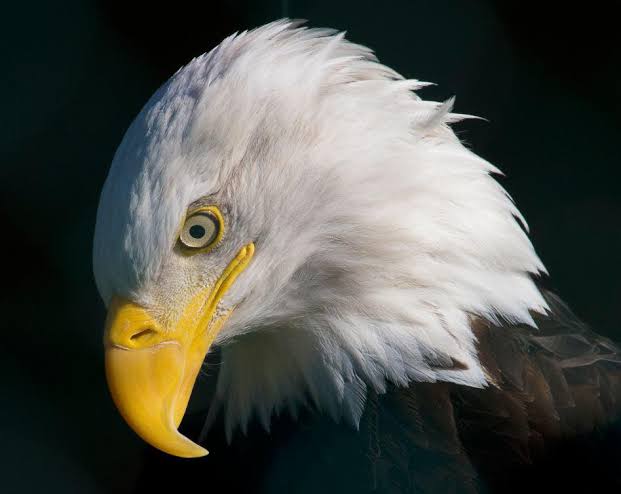Birdwatchers and wildlife enthusiasts around the world are always on the lookout for fascinating species, and the Hancock bird is no exception. This particular bird, striking appearance intriguing behavior, another marvel. The Hancock bird is a blend of resilience, adaptability, and ecological significance. As we uncover its features and habitat, we see how it has adapted and thrived in its natural environment, revealing the beauty and intricacy of the world of birds.
This article will delve into the habitat, behavior, and unique characteristics of the Hancock bird, shedding light on why it has become such an interesting species for researchers and birdwatchers alike.
Section 1: The Habitat and Physical Characteristics of the Hancock Bird
The Hancock Bird primarily found dense forests areas abundant flora, particularly tropical subtropical climates. These birds adapted environments where they have access array of resources that support their unique dietary and nesting requirements. The forested regions provide a perfect sanctuary for the Hancock bird, helping it avoid predators while also offering a rich supply of food.
Physically, the Hancock bird known for its distinct plumage. Its feathers often have a combination of vibrant colors that help it stand out in the wild, aiding in identification but also in attracting mates. The bird medium-sized, average wingspan allows soar gracefully. Its beak is sharp and slightly curved, making it ideal for its feeding habits, which range from insects to small fruits. The bird’s talons strong and well-adapted to gripping branches, which essential given forest-dwelling habits.
Their striking colors and vocal calls make them easy to spot and hear, a feature that birdwatchers find thrilling. The beauty of their feathers and their interesting behavior make the Hancock bird a popular subject for photography and research.
Section 2: The Role of the Hancock Bird in the Ecosystem
The Hancock bird is not just a marvel of nature in appearance but also plays a crucial role in its ecosystem. These birds contribute to the health of the forest by aiding in the dispersal of seeds. Their diet includes various fruits, and after consumption, they scatter the seeds in new areas, supporting plant regeneration and biodiversity in the region. This natural process helps maintain a balanced and thriving ecosystem, ensuring that plant species continue to flourish and provide food for other animals.
Another significant role that Hancock birds play in the ecosystem is pest control. As part of their diet, they consume various insects that might otherwise harm plant life. By keeping insect populations in check, they contribute to a healthier environment and assist farmers and locals who benefit from balanced insect populations.
Their nesting habits are also noteworthy. These birds build nests in high tree branches, which not only protects them from ground-based predators but also contributes to the structural stability of these trees. By selecting sturdy branches for nesting, they inadvertently promote stronger tree growth as they add weight and pressure that supports tree resilience. This structural support is part of a symbiotic relationship between the bird and its habitat, showcasing the intricate balance in nature that the Hancock bird embodies.
Conservation and Threats to the Hancock Bird
The Hancock bird, while resilient, is not immune to the threats that endanger many wildlife species. Habitat destruction is a primary concern, as deforestation and urbanization reduce the forested areas these birds call home. With shrinking natural habitats, Hancock birds face limited food sources, nesting areas, and increased exposure to predators. This loss of habitat also affects their breeding patterns, as they require specific environments to safely rear their young.
Moreover, climate change poses a substantial threat to the Hancock bird’s habitat and food sources. Altered weather patterns, warmer temperatures, and unusual rainfall can disrupt the ecosystem, affecting the availability of food and water. Many species plants and insects Hancock bird depends climate-sensitive, meaning even slight changes temperature cause decline population food sources.
To ensure the survival of the Hancock bird, conservation efforts must focus on protecting their natural habitat. Establishing protected areas preventing deforestation crucial steps conserving only Hancock bird but also the biodiversity forests they inhabit. Environmental organizations government agencies play crucial enforcing protections and raising awareness about importance maintaining ecosystems survival ospecies like Hancock bird.
Conclusion: Why the Hancock Bird Matters
The Hancock bird is a symbol of nature’s complexity and balance. Its role in seed dispersal, pest control, and ecosystem stability illustrates how interconnected life is in the wild. Losing such species would mean just loss aesthetic beauty; would disrupt delicate balance ecosystems intricate relationships that sustain planet’s biodiversity.
The Hancock bird reminds us of the importance of conservation efforts and sustainable practices. By understanding the value of this bird and similar species, we can appreciate the need to protect our natural resources. Conservation just about saving single species; it’s about preserving interconnected web which each creature, big small, plays vital part.
In world where wildlife faces unprecedented threats, the story Hancock bird serves reminder that nature’s beauty balance worth protecting. Through collective efforts, awareness, action, ensure remarkable bird, along countless other species, continues to thrive for generations to come.
